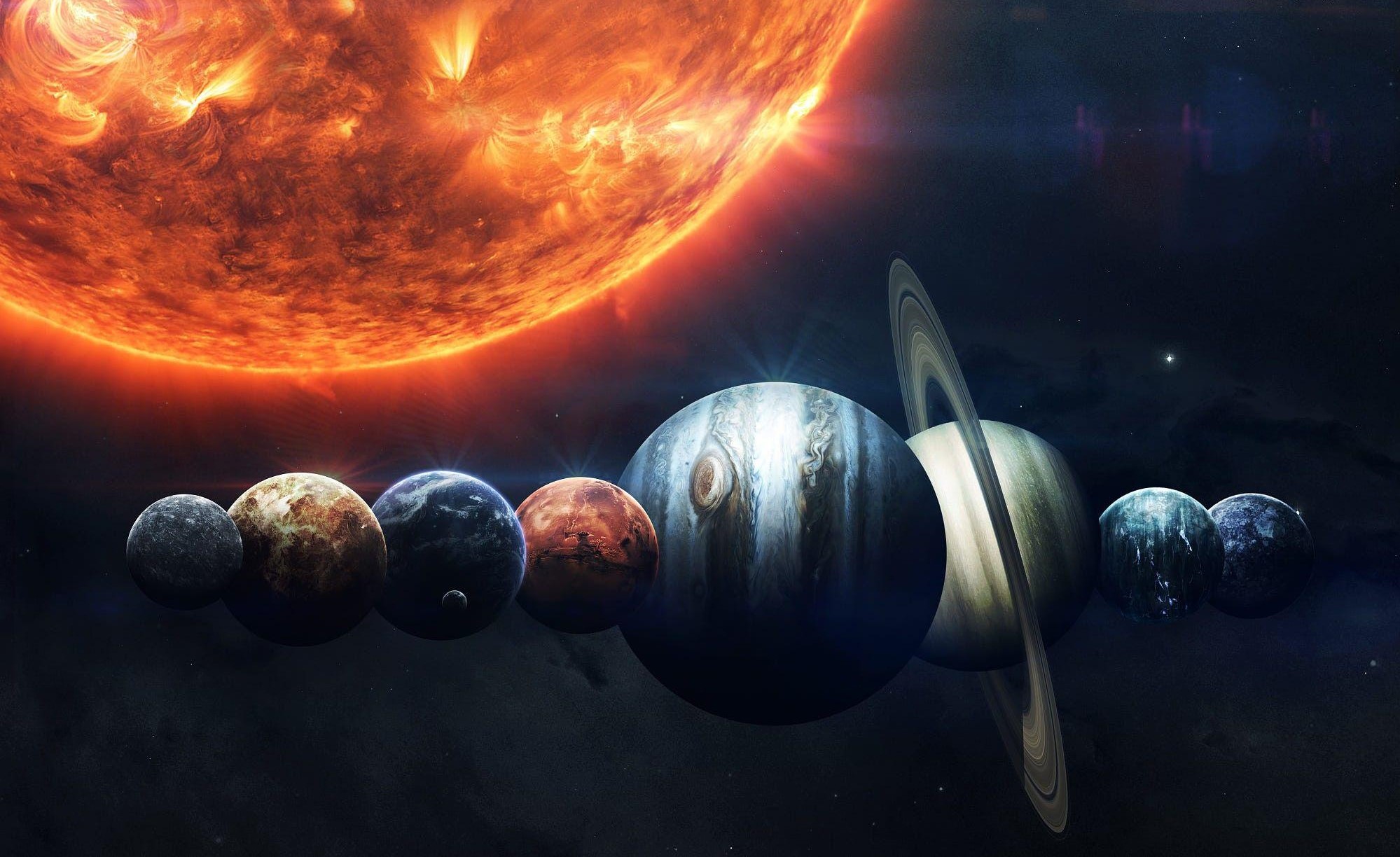
Welcome to our fascinating journey through the realms of nature as we explore 18 intriguing facts about the planet that we call home. With its vast landscapes, diverse ecosystems, and awe-inspiring wonders, our planet offers a wealth of knowledge and beauty waiting to be discovered. From the breathtaking wonders of the natural world to the intricate interplay of its ecosystems, there is much to learn and appreciate about our planet’s intricate web of life. In this article, we will delve into some lesser-known facts about our planet, shedding light on its mysteries and showcasing the incredible wonders that make Earth a truly remarkable place. So, fasten your seatbelts and prepare to embark on an enlightening journey through 18 fascinating facts about our precious planet.
Key Takeaways:
- The universe is filled with over 4,000 exoplanets, each with its own unique characteristics and mysteries waiting to be discovered.
- From the scorching heat of Venus to the icy winds of Neptune, planets offer a diverse and captivating glimpse into the wonders of our solar system and beyond.
Astronomers have discovered over 4,000 exoplanets.
The search for planets outside our solar system, known as exoplanets, has revealed a staggering number of celestial bodies beyond our own planetary neighborhood.
The largest planet in our solar system is Jupiter.
Jupiter, with its massive size and powerful gravitational force, dominates the solar system and is known for its iconic swirling storms, including the famous Great Red Spot.
Mercury is the closest planet to the Sun.
This small, rocky planet experiences extreme temperatures due to its proximity to the Sun, making it inhospitable for life as we know it.
Venus has a thick atmosphere composed mainly of carbon dioxide.
Due to its greenhouse effect, Venus has a scorching hot surface with temperatures that can reach up to 900 degrees Fahrenheit (475 degrees Celsius).
Earth is the only planet known to support life.
Our home planet boasts a diverse range of ecosystems, abundant water, and the perfect conditions for life to thrive.
Mars has the largest volcano in the solar system, Olympus Mons.
Olympus Mons stands at a staggering height of about 13.6 miles (22 kilometers) and is nearly three times the height of Mount Everest, making it the tallest volcano in the solar system.
Jupiter has the shortest day of all the planets.
Due to its rapid rotation, Jupiter completes a full day in just under 10 hours, resulting in its distinct oblate shape.
Saturn’s rings are made up of countless particles of ice and rock.
These mesmerizing rings encircling Saturn consist of billions of individual pieces, ranging in size from tiny grains to massive chunks of ice and rock.
Uranus rotates on its side.
Unlike other planets, Uranus is tilted to such an extreme degree that its axis of rotation is nearly parallel to the plane of its orbit around the Sun.
Neptune has the strongest winds in the solar system.
Gusts of wind on Neptune can reach speeds of up to 1,300 miles per hour (2,100 kilometers per hour), making it the windiest planet in our solar system.
Pluto is no longer classified as a planet.
Pluto was reclassified as a “dwarf planet” in 2006 by the International Astronomical Union, sparking a debate over the definition of a planet.
The Sun accounts for over 99% of the mass in our solar system.
With its immense size and gravitational pull, the Sun dominates our solar system, providing heat, light, and energy to sustain life on Earth.
All the planets in our solar system follow an elliptical orbit.
An elliptical orbit means that the planets‘ paths around the Sun are not perfect circles but rather elongated or elliptical shapes.
Many planets in the universe orbit around multiple suns.
Known as exoplanets in binary star systems, these planets have more than one sun, creating stunning celestial panoramas.
The gas giants in our solar system do not have solid surfaces.
Planets like Jupiter and Saturn consist mostly of gas, with no solid rocky surface like Earth or Mars.
The first exoplanet was discovered in 1992.
Astronomers Aleksander Wolszczan and Dale Frail detected two planets orbiting a pulsar, marking the first confirmed discovery of planets outside our solar system.
The composition of planets varies greatly.
From rocky planets like Earth to gas giants like Jupiter, the different compositions of planets contribute to their unique characteristics and environments.
Planets come in all shapes and sizes.
From tiny, rocky worlds to massive gas giants, the variety in planetary sizes is a testament to the incredible diversity of our universe.
The 18 Facts About Planets provide fascinating insights into the wonders of our solar system and beyond. These celestial bodies have captivated astronomers and stargazers for centuries, fueling our curiosity about the mysteries of the universe. Whether it’s the colossal storms of Jupiter, the breathtaking rings of Saturn, or the potential for life on Mars, each planet offers its own unique story and allure.
As we continue to explore and discover new exoplanets, our understanding of the universe expands, raising even more questions about the possibility of extraterrestrial life and the vastness of the cosmos.
In conclusion, the 18 Facts About Planets serve as a constant reminder of the incredible beauty and complexity of our planetary system. They ignite our imagination and drive our pursuit of knowledge, compelling us to explore the unknown and unlock the secrets of the universe.
Conclusion
In conclusion, the planet is a fascinating celestial body that continues to intrigue scientists and enthusiasts alike. With its vastness and variety, there are still many undiscovered wonders waiting to be explored. From its diverse ecosystems to its unique geological features, the planet provides a home for a wide range of flora and fauna. Additionally, its role in the larger solar system and its significance in our understanding of the universe cannot be understated. As we continue to learn more about the planet, we gain a deeper appreciation for the delicate balance of nature and the importance of preserving it for future generations.
FAQs
1. How many planets are there in our solar system?
Currently, there are eight recognized planets in our solar system: Mercury, Venus, Earth, Mars, Jupiter, Saturn, Uranus, and Neptune.
2. What makes the planet unique compared to other celestial bodies?
The planet stands out because it is the only known celestial body to support life. Its atmosphere, water, and favorable distance from the sun make it capable of sustaining a wide variety of life forms.
3. How old is the planet?
The planet is estimated to be around 4.5 billion years old. It formed from the debris left behind after the formation of the sun.
4. Why is studying the planet important?
Studying the planet helps us gain insights into the origins and evolution of life, understand climate patterns, and develop strategies to protect and preserve our environment.
5. What are some of the largest natural wonders on the planet?
Some of the largest natural wonders on the planet include the Great Barrier Reef, the Amazon Rainforest, the Grand Canyon, and the Mount Everest.
6. How does the planet contribute to the larger solar system?
The planet plays a crucial role in maintaining the balance of the solar system. Its gravitational pull influences the movement of other celestial bodies, and its position in the habitable zone allows for the possibility of life.
7. Are there any ongoing efforts to protect the planet?
Yes, there are numerous conservation and sustainability initiatives taking place globally to protect the planet. These include reducing carbon emissions, promoting renewable energy, and preserving natural habitats.
8. Can the planet sustain life in the future?
It is uncertain. The future sustainability of life on the planet depends on our collective efforts to address environmental challenges such as climate change and biodiversity loss.
9. What are some key scientific discoveries related to the planet?
Some key scientific discoveries related to the planet include the theory of evolution, the discovery of DNA, the understanding of plate tectonics, and the exploration of outer space through telescopes and satellites.
10. Is there a possibility of finding life on other planets?
Scientists believe that life may exist on other planets or moons in our solar system, such as Mars or the moons of Jupiter and Saturn. However, further exploration and research are needed to confirm these possibilities.
Was this page helpful?
Our commitment to delivering trustworthy and engaging content is at the heart of what we do. Each fact on our site is contributed by real users like you, bringing a wealth of diverse insights and information. To ensure the highest standards of accuracy and reliability, our dedicated editors meticulously review each submission. This process guarantees that the facts we share are not only fascinating but also credible. Trust in our commitment to quality and authenticity as you explore and learn with us.


